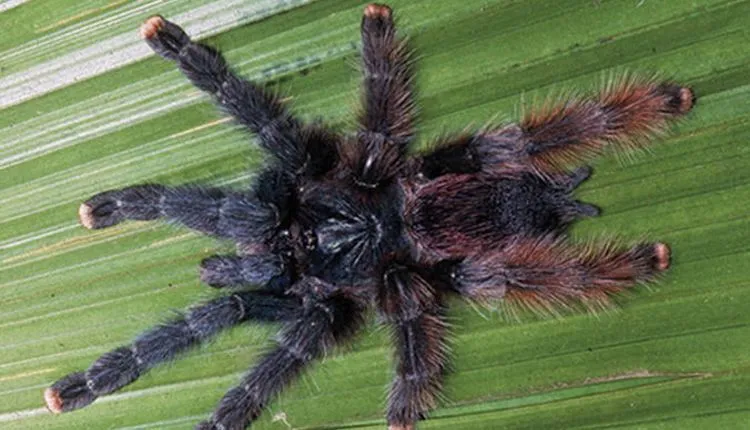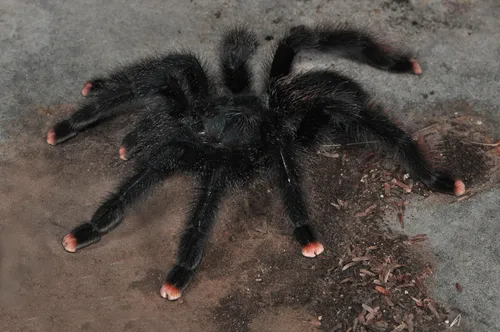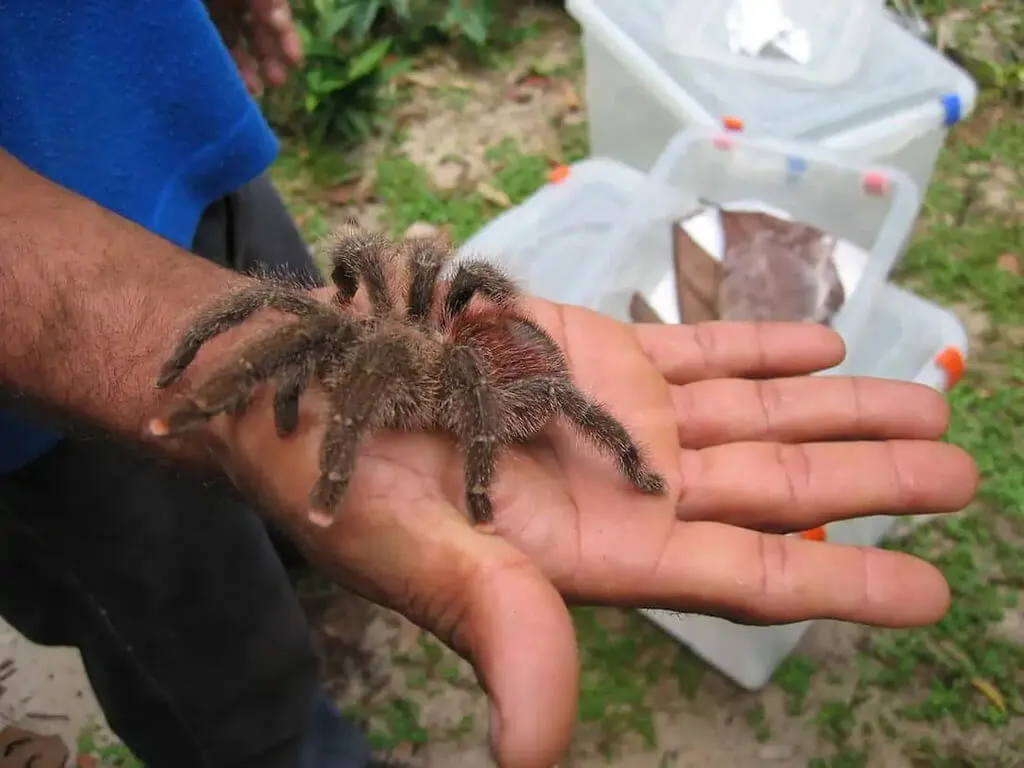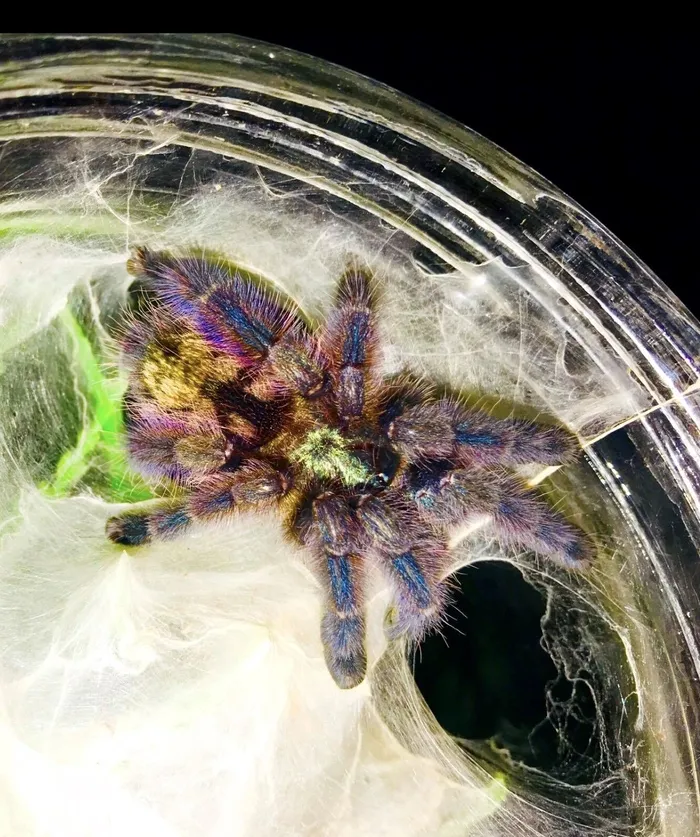Understanding Curly Hair and Pink Toe Tarantulas
The world of tarantulas offers a fascinating glimpse into the lives of these intriguing arachnids. For those considering a tarantula as a pet, two popular choices often top the list the Curly Hair Tarantula (Tliltocatl albopilosus) and the Pink Toe Tarantula (Avicularia avicularia). Both species present unique characteristics, making the decision of which one to choose a matter of personal preference, lifestyle, and experience level. This comparison will delve into the key aspects of each tarantula, providing a comprehensive overview to help you make an informed decision and ensure you can provide the best possible care for your new eight-legged friend. Understanding their differences in appearance, temperament, care requirements, and lifespan is crucial for responsible pet ownership.
Appearance Differences
The physical appearance is one of the most immediately noticeable differences between the Curly Hair and Pink Toe Tarantulas. These distinct characteristics not only aid in identification but also offer insights into their respective environments and behaviors. Observing these differences is part of the unique charm of owning each species, with each tarantula boasting a distinctive look that can influence a potential owner’s choice. These aesthetic variances are fundamental to understanding and appreciating the diversity within the tarantula world, and appreciating these features contributes to the unique experience of owning each of these amazing creatures.
Curly Hair Tarantula Appearance

The Curly Hair Tarantula is named for the dense, curly hairs that cover its body, giving it a fuzzy appearance. These hairs are typically a mix of browns, ranging from light tan to dark chocolate, and often have a golden sheen, particularly in younger specimens. Their legs are robust, and their bodies are relatively compact. This species exhibits a more terrestrial build, well-suited to burrowing and living on the ground. The overall appearance is one of robustness and earthiness, which adds to the charm of the Curly Hair Tarantula and makes it a visual delight for any tarantula enthusiast. The females can grow to be 5-6 inches in leg span, making them a medium-sized tarantula. (Image: curly-hair-tarantula-appearance.webp)
Pink Toe Tarantula Appearance
In contrast, the Pink Toe Tarantula is known for its arboreal lifestyle and delicate appearance. Their bodies are a darker shade of grey or black, and they possess distinctive pink or reddish tips on their feet, which give them their name. They have a lighter build, with longer legs that facilitate climbing and maneuvering in trees. Their carapace often has a metallic sheen that adds to their beauty. The overall impression is one of elegance and grace, which perfectly complements their arboreal habits. Pink Toe Tarantulas typically reach a leg span of 4-5 inches, making them similar in size to the Curly Hair Tarantula, but their slender build and arboreal adaptations set them apart. (Image: pink-toe-tarantula-appearance.webp)
Temperament and Handling
Temperament is a critical factor to consider when selecting a tarantula. The behaviors and handling characteristics of each species influence the interaction you will have with your pet. Understanding each tarantula’s temperament will guide how you prepare, interact, and care for the animal, ensuring the safety and well-being of both the tarantula and the handler. Safe handling practices, when considered alongside each species’ temperament, are essential for a positive pet ownership experience. Being aware of the tarantula’s behavior patterns also helps in creating a stress-free environment for them.
Curly Hair Tarantula Temperament

Curly Hair Tarantulas are generally considered to be docile and well-tempered, making them a great choice for novice keepers. They are less likely to exhibit defensive behaviors such as biting or kicking hairs. While they can be handled, it’s always recommended to do so with caution and respect for the animal. Their calm nature allows for a more relaxed experience during enclosure maintenance or observation. They are known for their placid demeanor and are often seen as a beginner-friendly species because of their generally cooperative nature. However, it is essential to remember that each tarantula has its own personality, and individual temperaments can vary. (Image: tarantula-handling.webp)
Pink Toe Tarantula Temperament
Pink Toe Tarantulas can be more skittish and quick to flee than Curly Hair Tarantulas. They are known for their speed and agility, and they can be easily startled. Handling is not generally recommended for this species, as they are more likely to run and potentially fall, leading to injury. While they are not aggressive, their defensive behavior can include flicking urticating hairs, which can cause skin irritation. Keeping a Pink Toe Tarantula involves a different approach to interaction compared to the Curly Hair Tarantula, where observation and appreciation of their natural behaviors in their enclosure are often favored over handling. Observe them and appreciate their unique character from a safe distance.
Care Requirements
The specific care requirements for tarantulas are crucial to their health and well-being. Meeting these requirements involves creating an ideal environment, providing a suitable diet, and maintaining the correct temperature and humidity levels. Understanding and adhering to these guidelines is crucial for any tarantula keeper. Proper care will create a thriving habitat where these fascinating creatures can thrive, providing endless opportunities for observation and enrichment. Knowing the appropriate enclosure, diet, and environmental conditions can dramatically increase the life span of your tarantula.
Enclosure Setup

For Curly Hair Tarantulas, a terrestrial setup is best. This means a tank that is wider than it is tall, with a substrate of coco fiber, peat moss, or a similar material that allows for burrowing. The enclosure should include a hide, such as a piece of cork bark or a cave, to provide a sense of security. Pink Toe Tarantulas, being arboreal, require a tall enclosure with plenty of vertical space for climbing. The enclosure should include branches, cork bark, or other climbing structures. Good ventilation is important for both species, but especially for Pink Toes. The substrate should be appropriate for the species and should be kept clean and regularly maintained. (Image: tarantula-enclosure-setup.webp)
Feeding and Diet
Both Curly Hair and Pink Toe Tarantulas are insectivores. Their diet should consist primarily of appropriately sized insects, such as crickets, roaches, and mealworms. The size of the prey should be no larger than the tarantula’s body. Feeding frequency depends on the tarantula’s age; juveniles should be fed more often than adults. It’s important to remove any uneaten prey within 24 hours to prevent stress and potential harm to the tarantula. Provide a shallow water dish with fresh water at all times. Supplementing the diet with occasional vitamin-dusted insects can also be beneficial, and these can be purchased at any pet store. (Image: tarantula-feeding.webp)
Humidity and Temperature
Maintaining the correct environmental conditions is critical for tarantula health. Curly Hair Tarantulas thrive in moderate humidity levels, between 60-70%, while Pink Toe Tarantulas require higher humidity, around 70-80%. Both species prefer temperatures between 75-85°F (24-29°C). Using a hygrometer and thermometer is essential to monitor these levels accurately. Regular misting can help maintain humidity, but avoid over-misting, as this can lead to mold growth and other issues. Proper ventilation is also key to preventing mold and ensuring the well-being of your tarantula. The right combination of temperature and humidity creates a healthy and comfortable environment.
Lifespan and Growth

The lifespan and growth patterns of both Curly Hair and Pink Toe Tarantulas offer insights into their long-term care and the commitment required. Knowing the lifespan and growth rate assists in planning for the long-term commitment associated with pet ownership. Understanding the duration of these creatures’ lives is a key element for pet owners. Careful consideration and an awareness of the long-term care needs will aid in providing the best possible environment for your tarantula.
Curly Hair Tarantula Lifespan
Female Curly Hair Tarantulas can live for 10-20 years or longer in captivity, while males typically live for 5-10 years. Growth is relatively slow, with tarantulas molting periodically as they grow. During molting, the tarantula sheds its exoskeleton, a vulnerable period where they are best left undisturbed. This process is a sign of healthy growth and development. The duration of their lives is a long-term commitment, so it is important to understand before acquiring one. (Image: curly-hair-tarantula-overview.webp)
Pink Toe Tarantula Lifespan
Pink Toe Tarantulas have a slightly shorter lifespan. Females typically live for 8-12 years, and males for 2-4 years. Similar to the Curly Hair Tarantula, the Pink Toe also molts as it grows. Their molting frequency and growth rate are comparable. The shorter lifespan of the male is important to consider, especially if you plan to breed them. The long-term commitment is still there with the females, so it is important to understand what you are getting into before getting your Pink Toe Tarantula. (Image: pink-toe-tarantula-overview.webp)
Choosing the Right Tarantula

The ideal choice between a Curly Hair and a Pink Toe Tarantula depends on your individual circumstances, experience, and preferences. Considerations for both space and the level of commitment should be evaluated to determine the perfect match. Assessing these factors carefully will contribute to a positive and successful tarantula-keeping experience. Careful consideration of the various factors can help you in making the right decision.
Beginner Friendliness
For beginners, the Curly Hair Tarantula is often recommended due to its docile temperament and ease of care. Their relatively slower movements and less skittish nature make them more manageable for those new to tarantulas. Their tolerance to handling (with proper precautions) allows for more interaction, making them a great option for those who are just starting out. Their simpler care requirements further contribute to their appeal. Pink Toe Tarantulas, while beautiful, may present more of a challenge due to their temperament and specific needs, requiring a more experienced keeper.
Space and Commitment
Consider the space you have available and the time you can dedicate to care. Both species require appropriate enclosures and regular maintenance, including feeding and cleaning. Pink Toe Tarantulas, with their arboreal needs, may require a taller enclosure, while Curly Hair Tarantulas need space for burrowing. The long lifespans of both species demand a long-term commitment. Ensuring that you have the time, resources, and knowledge to provide for your tarantula throughout its life is an essential consideration.
Final Thoughts

Both the Curly Hair and Pink Toe Tarantula offer a unique and rewarding experience for tarantula enthusiasts. Each species provides a fascinating perspective into the world of arachnids, offering distinctive features, care requirements, and personalities. The Curly Hair Tarantula generally provides an easier experience for beginners, with a manageable temperament and straightforward care guidelines. The Pink Toe Tarantula, with its elegant appearance and engaging arboreal habits, is great for experienced keepers. Understanding the differences, considering your own preferences and experience level, and dedicating yourself to providing the proper care will result in a fulfilling and educational experience.
